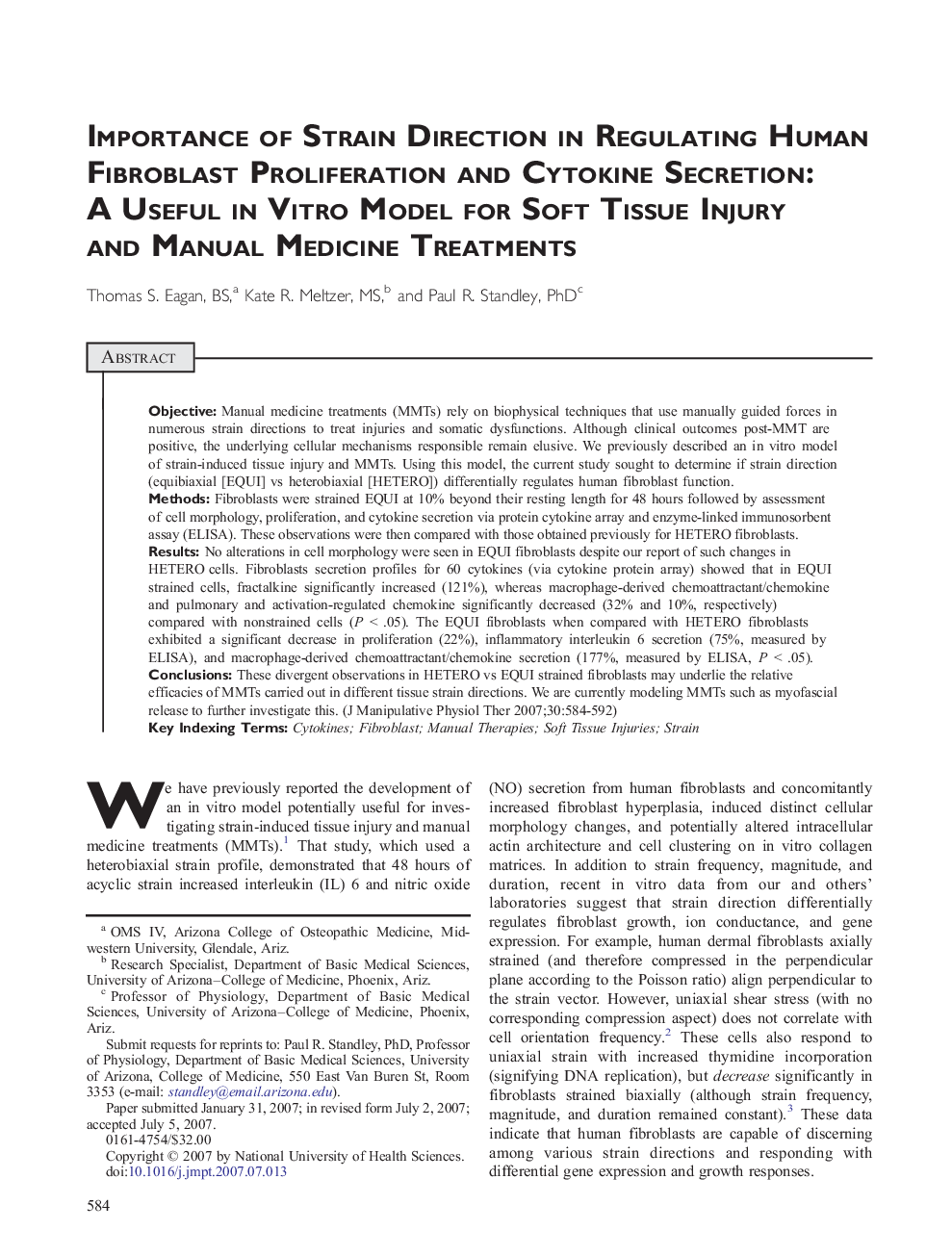| کد مقاله | کد نشریه | سال انتشار | مقاله انگلیسی | نسخه تمام متن |
|---|---|---|---|---|
| 2621354 | 1135685 | 2007 | 9 صفحه PDF | دانلود رایگان |

ObjectiveManual medicine treatments (MMTs) rely on biophysical techniques that use manually guided forces in numerous strain directions to treat injuries and somatic dysfunctions. Although clinical outcomes post-MMT are positive, the underlying cellular mechanisms responsible remain elusive. We previously described an in vitro model of strain-induced tissue injury and MMTs. Using this model, the current study sought to determine if strain direction (equibiaxial [EQUI] vs heterobiaxial [HETERO]) differentially regulates human fibroblast function.MethodsFibroblasts were strained EQUI at 10% beyond their resting length for 48 hours followed by assessment of cell morphology, proliferation, and cytokine secretion via protein cytokine array and enzyme-linked immunosorbent assay (ELISA). These observations were then compared with those obtained previously for HETERO fibroblasts.ResultsNo alterations in cell morphology were seen in EQUI fibroblasts despite our report of such changes in HETERO cells. Fibroblasts secretion profiles for 60 cytokines (via cytokine protein array) showed that in EQUI strained cells, fractalkine significantly increased (121%), whereas macrophage-derived chemoattractant/chemokine and pulmonary and activation-regulated chemokine significantly decreased (32% and 10%, respectively) compared with nonstrained cells (P < .05). The EQUI fibroblasts when compared with HETERO fibroblasts exhibited a significant decrease in proliferation (22%), inflammatory interleukin 6 secretion (75%, measured by ELISA), and macrophage-derived chemoattractant/chemokine secretion (177%, measured by ELISA, P < .05).ConclusionsThese divergent observations in HETERO vs EQUI strained fibroblasts may underlie the relative efficacies of MMTs carried out in different tissue strain directions. We are currently modeling MMTs such as myofascial release to further investigate this.
Journal: Journal of Manipulative and Physiological Therapeutics - Volume 30, Issue 8, October 2007, Pages 584–592